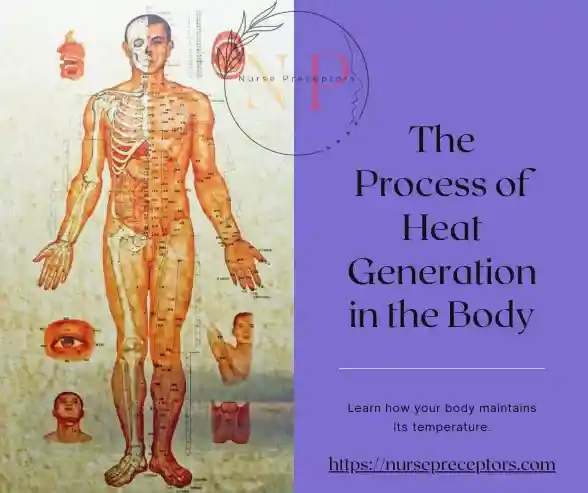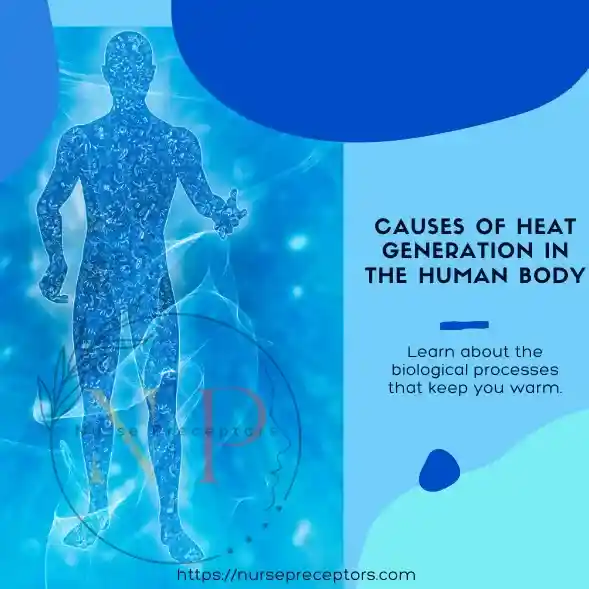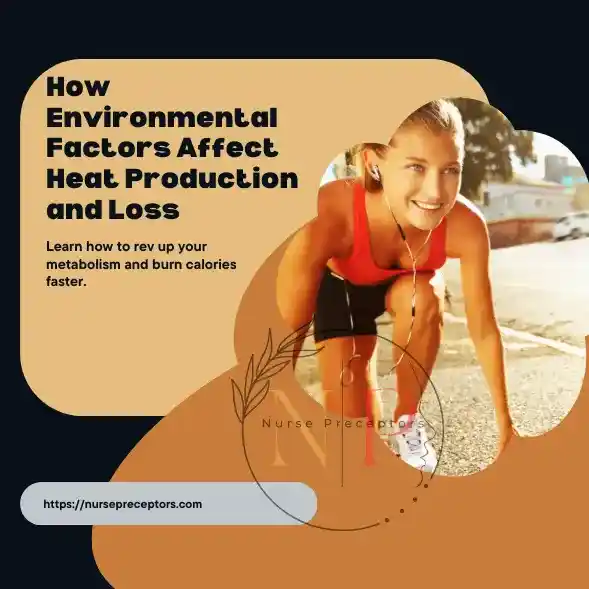How Does Thermoregulation Work in the Human Body?
Thermoregulation is an essential physiological process in the human body that involves maintaining a stable internal body temperature despite varying external environmental conditions.
Through a complex process of heat production and heat loss, the human body can sustain a core temperature of around 37 degrees Celsius or 98.6 degrees Fahrenheit, which is vital for optimum cellular function and overall homeostasis.
The process of thermoregulation is primarily controlled by the hypothalamus, a small region in the brain that acts as the body’s thermostat.
It responds to changes in core and skin temperatures by sending signals to different parts of the body to either conserve or dissipate heat.
On a cold day, for instance, the hypothalamus triggers responses such as shivering and vasoconstriction to increase heat production and reduce heat loss. Conversely, on a hot day, it initiates sweating and vasodilation to enhance heat loss through evaporation and increased blood flow to the skin.
Thermoregulation is not just about comfort. It plays a crucial role in human survival. Disruptions to thermoregulation, whether due to disease, exposure to extreme temperatures, or other factors, can lead to serious health consequences such as heatstroke or hypothermia.
Furthermore, understanding thermoregulation can also provide insights into the management of certain health conditions. For example, patients with impaired thermoregulation, such as those with burns or spinal cord injuries, require special care to maintain their body temperature.
Lastly, thermoregulation is a fundamental physiological process that allows the human body to adapt to varying environmental conditions and maintain its optimal operating temperature.
Understanding how this process works can not only enhance our appreciation of human physiology but also inform healthcare practices for individuals with impaired thermoregulation.
Read more: Understanding the Importance of Basic Human Needs: A Comprehensive Guide-Generic BSN-3023
Importance of Maintaining Body Temperature
The human body is a finely tuned machine that relies on multiple chemical reactions to sustain life. Most of these responses are temperature-dependent, expressing they occur optimally within a specific temperature range.
Deviations from this range can disrupt these reactions and lead to bad functioning of various organs and systems. therefore, maintaining a stable body temperature is vital for the proper functioning of enzymes, hormones, and other biochemical processes.

The significance of maintaining an optimal body temperature can not be exaggerated. All our physiological processes including metabolism, enzyme activity, chemical reactions, and physical functioning are dependent on it.
However, we may suffer hyperthermia, which can lead to heat stroke and severe damage to the brain and other vital organs, If our body temperature becomes too high.
On the other hand, if our body temperature becomes too low, we may suffer hypothermia, which can slow down our heart rate, respiratory rate, and metabolism, leading to life-threatening complications.
An optimal body temperature allows our bodies to work efficiently and optimally, helping us stay healthy and active. Therefore, it’s important to monitor and manage our body temperature effectively, especially during extreme weather conditions or when we’re sick.
Read more: A Comprehensive Guide to Gordon’s Functional Health Patterns: Exploring 11 patterns
Mechanisms of Heat Production in the Body
Heat production in the human body is a critical physiological process that is intrinsically linked to metabolism. It is often considered as a byproduct of various metabolic processes that are essential for maintaining life.
Heat production, also known as thermogenesis, plays a pivotal role in maintaining the body’s core temperature, which is vital for the functioning of various organ systems.
The primary source of heat production in the human body is through the breakdown of food substances in our cells. This process, known as cellular respiration, involves a series of chemical reactions that convert nutrients into energy.
The energy that is not used for work is released as heat. This is referred to as obligatory thermogenesis, which accounts for approximately 60-70% of the total heat produced in the body.

In addition to this, the body also produces heat through voluntary activities such as physical exercise and involuntary mechanisms like shivering.
In cold environments, shivering triggers rapid muscle contractions that generate heat to maintain body temperature. This form of heat production, called facultative thermogenesis, can boost the metabolic rate by up to five times.
Another significant contributor to heat production is brown adipose tissue (BAT) or brown fat. Unlike white fat, which stores energy, brown fat burns calories to produce heat. This process is especially active during infancy and in individuals exposed to cold temperatures.
From cellular respiration to physical activity and brown fat metabolism, various mechanisms work in unison to ensure adequate heat production and distribution throughout the body.
Understanding these processes can provide insights into managing conditions related to thermal regulation and energy balance.
Causes of Heat Production in the Body
The human body is a complex system with numerous functions, one of which is the production of heat. Understanding what causes heat production in the human body is essential for appreciating how our bodies maintain a stable internal environment, despite external temperature changes.
The primary cause of heat production in the human body is the metabolic processes that are constantly occurring.

Metabolism, which refers to all the chemical reactions in our bodies, is the principal source of this internally generated heat. During these reactions, energy is produced and used for various bodily functions such as movement, growth, and repair.
However, not all this energy is used efficiently; around 60% is lost as heat. This heat generation is especially noticeable during physical activity when metabolic rates increase and more heat is produced.
The process of thermogenesis also contributes to heat production. This includes both obligatory thermogenesis – heat produced as a byproduct of basic metabolic functions – and facultative thermogenesis – heat produced in response to specific stimuli like cold exposure or food consumption.
Brown adipose tissue, commonly known as brown fat, plays a significant role in facultative thermogenesis. This special type of fat is capable of burning calories to produce heat, helping to maintain body temperature.
Digestion and absorption of food, known as dietary thermogenesis, also produce heat. When we consume food, our bodies must expend energy to break it down and absorb nutrients, which generates heat as a byproduct.
Read more: ANCC Magnet Recognition Program: Constructive 1 platform for all nurses
Ways or Factors that Promote Heat Production in the Body
Several factors can influence heat production, including metabolic rate, physical activity, food intake, and external temperature.

- Firstly, the metabolic rate significantly affects heat production. It is the rate at which the body uses energy to maintain basic bodily functions while at rest. Individuals with a higher basal metabolic rate (BMR) tend to produce more heat as their bodies require more energy to function.
- Secondly, physical activity is another key factor that influences heat production. During exercise or any physical exertion, the muscles generate heat due to the increased metabolic activity. This increased heat production can lead to an increase in body temperature, which is why we sweat during intensive workouts – it’s the body’s way of cooling down.
- In addition, the type and amount of food consumed can also affect heat production. This is known as diet-induced thermogenesis. Certain foods, particularly those high in protein or fiber, require more energy to digest and metabolize, thus leading to increased heat production.
- Lastly, external environmental factors such as ambient temperature and humidity can also influence the body’s heat production. In cold conditions, the body needs to generate more heat to maintain its core temperature, leading to increased metabolic activity and heat production. Conversely, in hot conditions, the body works to dissipate excess heat to cool down, which can also impact overall heat production.
- Overall, multiple factors interact to affect heat production in the human body. Understanding these factors can provide valuable insights into how we can better manage our body’s thermal regulation, particularly in extreme environmental conditions or during periods of physical exertion.
Read more: 6 Ethical Principles in Nursing-Nursing Ethical and Legal Issues
1. Metabolic Rate
Metabolic rate is basically the speed of metabolism that determines the amount of energy a body requires to maintain its fundamental functions such as respiration, circulation, cell production, and nutrient processing. The metabolic rate has a significant impact on heat production in the body.
When the metabolic rate increases, the body burns additional calories, leading to an increase in heat production. This is due to chemical reactions occurring during metabolism that produce heat as a byproduct.
The heat generated in this process is critical for maintaining the body’s core temperature. In cold climates, for example, the body’s metabolic rate can increase to generate further heat to maintain body temperature.

Understanding the impacts of metabolic rate on heat production is pivotal in various fields, including medicine and sports. For instance, individuals with high metabolic rates generate additional body heat and may require more hydration during physical exertion to prevent overheating.
Contrarily, a lower metabolic rate can result in less heat production. This can be favorable in hotter climates where excessive heat could lead to complications like heat stroke. However, it also implies that people with slower metabolisms may struggle to generate sufficient body heat in colder climates.
It’s important to note that several factors can impact an individual’s metabolic rate, including age, sex, genetics, and degree of physical exertion. Hence, understanding these impacts can help in developing strategies for maintaining optimal body temperature and overall health.
2. Physical Activity
Physical activity plays a crucial role in heat generation in the body, which is vital for maintaining the body’s core temperature. The human body operates optimally at an average temperature of 37 degrees Celsius, and any deviation from this norm, either upwards or downwards, could have severe health implications. Therefore, understanding the interplay between physical activity and heat generation is crucial.
Physical activity leads to an increase in metabolic rate, which in turn results in the production of heat, a phenomenon known as thermogenesis. During physical exercise, muscles contract and relax, leading to an increase in energy expenditure.
This energy is partly transformed into kinetic energy, which facilitates movement and is partly dissipated as heat. This heat generation is essential in maintaining the body’s overall temperature balance.

Heat generation during physical activity is a complex process mediated by several factors including intensity and duration of the exercise, environmental conditions, and individual characteristics such as age, gender, and fitness level.
The body has sophisticated mechanisms to regulate heat production and dissipation to prevent overheating or hypothermia.
For instance, during strenuous physical activities that increase the body’s internal temperature, the body initiates cooling mechanisms such as sweating to dissipate excess heat and maintain thermal equilibrium.
Conversely, in cold environments or during low-intensity physical activities that do not generate sufficient heat, the body can initiate shivering – a form of involuntary muscle contraction that generates heat to raise the body’s core temperature.
Read more: A comprehensive guide to Next Generation NCLEX (NGN)
3 Thermic Effect of Food
The thermic effect of food, also referred to as diet-induced thermogenesis, is a fascinating aspect of human metabolism that contributes significantly to heat production.
The term “thermic effect” denotes the amount of energy expended by our bodies to process the food we consume – encompassing the processes of digestion, absorption, distribution, and storage of nutrients.
This energy expenditure is responsible for the production of heat in our bodies, helping maintain our core body temperature.
The thermic effect varies depending on the type of food consumed. It is generally observed that proteins have a higher thermic effect compared to carbohydrates and fats.
This can be attributed to the fact that proteins are more complex in structure and require more energy to break down, leading to an increased rate of heat production. Hence, the thermic effect of food plays a pivotal role in our metabolic rate and overall energy expenditure.
Understanding the thermic effect of food can be crucial in designing effective dietary strategies. It is worth noting that foods with a higher thermic effect can contribute to weight loss, as they require more energy to digest, absorb, and distribute nutrients.
This results in a greater expenditure of calories, which can lead to a calorie deficit when coupled with regular physical activity.
The thermic effect of food not only aids in maintaining our body temperature but also plays an essential role in managing our weight and overall health.
As we continue to understand more about this phenomenon, it provides valuable insights into the intricate relationship between food consumption and energy expenditure.
Read more: Mastering the NCLEX-RN Exam: A Comprehensive Guide 3 elements of success
4. Hormonal Regulation
Hormonal regulation plays a pivotal role in controlling heat production in the body.
Thyroid hormones, for example, significantly impact metabolic rate and, consequently, heat production. An increase in thyroid hormones can raise the metabolic rate, leading to greater heat production, while a decrease can have the opposite effect.
Other hormones, such as epinephrine and norepinephrine, released in response to stress or cold exposure, also stimulate metabolism and heat production.
The intricate balance of hormones that regulate body temperature illustrates the body’s complex response to internal and external stimuli. Hormonal imbalances can disrupt this balance, affecting the body’s ability to produce and regulate heat, which has implications for health and disease management.
Mechanisms of Heat Loss in the Human Body
Heat loss in the human body ensures that the body maintains an optimal core temperature. If this temperature is not maintained, it can lead to serious health issues, such as hypothermia or hyperthermia.
There are four primary mechanisms through which heat loss occurs in the human body: conduction, convection, radiation, and evaporation.
Conduction refers to the transfer of heat from the body to a cooler object or surface in direct contact with it.
Convection involves heat loss to the surrounding air or water, which carries away the heat as it circulates.
Radiation is the emission of heat in the form of infrared rays from the body’s surface to cooler surroundings.
Lastly, evaporation is a cooling process that occurs when sweat or other liquids on the body’s surface evaporate, drawing heat away from the body.

The process of heat loss is carefully regulated by the body’s autonomic nervous system. When the body senses an increase in core temperature, it takes measures to increase heat loss. This can include triggering sweat production or dilating blood vessels close to the skin surface to allow more heat to escape.
Conversely, if the body’s temperature drops too low, mechanisms are triggered to reduce heat loss and increase heat production. These can include shivering, constriction of blood vessels near the skin’s surface, and rising hair on the skin to trap a layer of warm air close to the body.
Understanding these mechanisms allows us to better manage situations where excessive heat loss may be detrimental, such as in cold environments or during certain medical conditions.
Ways or Factors that Affect Heat Loss in the Body
Heat loss is influenced by various factors. These factors can either increase or decrease the rate at which heat loss occurs, directly impacting the overall body temperature.
Maintaining optimal body temperature is crucial for the normal functioning of the body as it influences metabolic processes, enzymatic reactions and other physiological functions.
- The first factor influencing heat loss is the surrounding environment. When the body is exposed to colder temperatures, it loses heat faster as it tries to match the ambient temperature. This is why in cold weather, people tend to feel chilled as their body is losing heat rapidly.
- Secondly, clothing plays a significant role in heat loss. Wearing layers of clothes traps air, which acts as an insulator reducing heat loss from the body. On the contrary, less clothing or wet clothing can increase heat loss, leading to hypothermia in extreme conditions.
- Physical activity or exercise is another factor that affects heat loss. During physical exertion, the metabolic rate increases, producing more heat. This excess heat needs to be lost to prevent overheating of the body. Therefore, during exercise, the rate of heat loss increases to balance the increased heat production.
- Moreover, nutritional status and hydration levels also impact heat loss. Dehydration can affect the body’s ability to regulate temperature and can increase heat loss. Also, malnutrition can reduce the body’s metabolic rate leading to less heat production and thus increased heat loss.
- Lastly, certain health conditions and medications can alter the body’s normal heat production and loss mechanisms. Conditions such as hyperthyroidism can increase metabolic rate, leading to increased heat production and consequent heat loss.
1. Radiation
Radiation is a form of heat transfer that does not require direct contact between two surfaces.
The human body loses heat through radiation when the surrounding environment is cooler than the skin. This process involves the emission of infrared radiation from the skin’s surface, dissipating body heat into the environment.
Radiation accounts for a significant portion of heat loss under normal conditions, highlighting the importance of environmental temperature in regulating body heat.
The role of radiation in heat loss underscores the need for appropriate clothing and shelter, especially in cold environments, to minimize heat loss and maintain body temperature.
Understanding how radiation contributes to heat balance can help individuals make informed decisions about their exposure to different environments and their choice of clothing.
2. Conduction
Conduction refers to the process of transferring heat between two objects or materials that are in direct contact with each other and have different temperatures.
In the context of the human body, heat loss through conduction occurs when the body comes into contact with cooler objects or surfaces, such as cold water or a chilly floor.
The rate of heat loss through conduction depends on the temperature difference between the body and the object, as well as the thermal conductivity of the materials involved.
Minimizing excessive heat loss through conduction is crucial in cold environments, which is why insulation and protective clothing are essential in such conditions.
Conversely, in hot conditions, increasing conductive heat loss by contacting cooler surfaces can aid in body cooling. Understanding conduction’s role in temperature regulation helps individuals adapt to varying environmental temperatures, enhancing comfort and safety.
3. Convection
Convection is a process in which heat is transferred by the movement of fluids or gases.
In the case of the human body, heat loss through convection occurs when air or water moves across the skin, carrying away body heat.
This process can be natural, as in the case of wind or water currents, or forced, such as with the use of fans or moving through water.
The rate of convective heat loss is influenced by the speed of the moving fluid or gas and the temperature difference between the body and the environment.
Understanding how convection contributes to body heat dispersion is essential for managing body temperature in various conditions. It highlights the importance of environmental control, such as air conditioning and heating, as well as the choice of clothing and activities, in maintaining thermal comfort.
4. Evaporation
Evaporation is a critical mechanism for body cooling, especially in hot conditions. This process involves the conversion of sweat on the skin’s surface into vapor, which carries away heat from the body.
Evaporation is the primary means by which the body cools itself when the ambient temperature is higher than the body’s temperature, making it a vital component of thermoregulation.
The effectiveness of evaporative cooling is influenced by several factors, including humidity, air movement, and the surface area available for evaporation.
High humidity levels can hinder the evaporation of sweat, reducing its cooling effect, while increased air movement can enhance it. Understanding the role of evaporation in body cooling can help individuals manage their exposure to heat and make choices that support effective thermoregulation.
5. Respiration
Respiration also plays a role in heat loss from the body. Each time an individual inhales, they take in cooler air, which is then warmed and humidified before being exhaled. This exchange of air results in the loss of heat and moisture, contributing to the body’s overall heat balance.
The rate of heat loss through respiration can increase with physical activity, as both the volume of air exchanged and the rate of breathing rise. The impact of respiration on heat loss is particularly noticeable in cold environments, where the difference between the temperature of inhaled air and exhaled air can be significant.
Understanding the role of respiration in heat loss can provide insights into managing body temperature under varying conditions and activities.
6. Vasodilation
Vasodilation, the widening of blood vessels, is a natural process that the body uses to manage heat. By increasing the diameter of blood vessels, particularly those near the skin’s surface, vasodilation enhances blood flow to the skin, facilitating heat dissipation.
This process is crucial for cooling the body in hot conditions, as it allows for increased heat loss through radiation, conduction, and convection. The body’s ability to regulate vasodilation in response to temperature changes is an essential component of thermoregulation.
Factors that influence vasodilation, such as hydration status and physical condition, can impact the body’s capacity to manage heat, underscoring the importance of maintaining overall health and well-being for optimal temperature regulation.
Environmental Factors Affecting Heat Production and Loss
The environmental factors significantly influence the heat production and loss in various ways. Heat exchange between the human body and its surroundings is a complex process, and the environmental factors play a fundamental role in this process.
The heat produced by the body is either lost to the environment or conserved to maintain an optimal internal body temperature. In this context, it is crucial to understand that an imbalance in heat production and loss can lead to health complications such as hypothermia or hyperthermia.

- The primary environmental factors that affect heat production and loss include ambient temperature, humidity, wind speed, and solar radiation. Ambient temperature is one of the most direct influences on heat exchange. When the surrounding temperature is high, the body loses heat primarily through sweating, a process that increases with rising temperatures. Conversely, when the environmental temperature is low, the body retains more heat to maintain its internal temperature.
- Humidity also plays a significant role in heat loss. When the environmental humidity level is high, it reduces the rate at which sweat evaporates from the skin, thereby limiting the body’s ability to lose heat effectively. Wind speed can also influence heat exchange by increasing the rate of heat loss through convection. Higher wind speeds can make a relatively mild temperature feel much colder, leading to an increase in heat loss from the body.
- Solar radiation is another environmental factor that affects heat production and loss. Exposure to sunlight increases the body’s heat load, leading to an increase in heat production. On the other hand, lack of sunlight can lead to decreased heat production.
What is the Role of the Hypothalamus in Temperature Regulation?
The hypothalamus, an integral component of the human brain, plays a critical role in thermoregulation, the process by which the body maintains its core internal temperature.
This region of the brain is responsible for balancing heat production with heat loss, enabling the human body to sustain a constant and healthy internal temperature, typically around 37°C (98.6°F).
The hypothalamus functions as the body’s thermostat, continuously receiving inputs from thermoreceptors located throughout the body.
These receptors monitor the temperature of both the body’s core and its surface, sending this information to the hypothalamus. Upon receiving these signals, the hypothalamus compares the current body temperature to the ideal set point.
If the existing temperature deviates from this set point, the hypothalamus initiates appropriate thermoregulatory responses to return the body to its optimal temperature.

These responses can range from stimulating sweat glands to promote heat loss through evaporation when the body is too warm, or triggering muscle contractions (shivering) to generate heat when the body is too cool.
Further, the hypothalamus also regulates peripheral vasoconstriction and vasodilation, which are processes that respectively decrease or increase blood flow to the skin to either retain or dissipate heat.
In essence, the hypothalamus is a vital component in thermoregulation, ensuring that our bodies maintain a stable internal environment conducive to optimal physiological functioning.
Understanding the role of the hypothalamus in thermoregulation not only illuminates our comprehension of human physiology but could also aid in developing treatments for disorders related to temperature regulation.
Disorders and Conditions Related to Thermoregulation
There are several disorders and conditions that can disrupt the delicate balance of thermoregulation, leading to adverse health impacts.
- One such condition is hyperthermia, a state of excessively high body temperature often caused by environmental heat exposure, intense physical activity, or certain medications. Hyperthermia poses serious threats to health, including heatstroke, which can result in organ damage or death if not promptly treated. Hypothermia, on the other hand, is a condition characterized by abnormally low body temperatures. It can occur due to prolonged exposure to cold, inadequate clothing in cold weather, or certain medical conditions that compromise the body’s heat production or conservation mechanisms. Both hyperthermia and hypothermia can be life-threatening conditions that require immediate medical attention.
- Another set of disorders related to thermoregulation are fever-related illnesses. Fevers occur when the body’s thermoregulatory set-point is raised, typically in response to infection or inflammation. While fevers are generally a beneficial response that helps the body fight off disease, they can become dangerous if they are too high or prolonged.
- Other disorders that affect thermoregulation include thyroid conditions like hyperthyroidism and hypothyroidism, which can increase or decrease metabolic heat production respectively, and neurodegenerative diseases like Parkinson’s disease or multiple sclerosis, which can disrupt the nervous system’s control of thermoregulation.
Read more: Understanding the Types of Nursing Educational Programs A Comprehensive Guide-2023
Understanding these disorders is important for medical professionals as it aids in the diagnosis and treatment of patients. Moreover, general awareness about these conditions can help individuals take appropriate measures to prevent and manage potential risks associated with impaired thermoregulation.
Conclusion: Maintaining Optimal Body Temperature for Overall Well-being
In conclusion, maintaining an optimal body temperature is integral for overall well-being. Body temperature regulation is a crucial physiological process that is linked to many functions in the body.
An optimal body temperature supports metabolic processes, enzyme activities, and other bodily functions that are essential for health and survival. When body temperature is too high or too low, it can lead to serious health complications, including heat exhaustion, hypothermia, and even organ failure.
The human body has a sophisticated system of thermal regulation, with various mechanisms in place to maintain a stable body temperature, such as sweating and shivering. However, external factors can sometimes disrupt this balance.
Extreme environmental conditions, intense physical activity, certain diseases and medications can all impact our body temperature. Hence, it is important to understand how these factors can affect us, and take steps to mitigate their effects where possible.
Maintaining an optimal body temperature also plays a significant role in our sleep quality, cognitive function, and immune response. Studies have shown that sleep disturbances can often be traced back to improper body temperature regulation.
Similarly, cognitive functions like memory and attention can be impaired if the body is too hot or too cold. On another note, our immune system relies on an optimal body temperature to function properly and fight off infections.
Therefore, it is clear that the maintenance of an optimal body temperature is not just a matter of comfort, but indeed a matter of health and well-being.
By being mindful of our body temperature and taking steps to maintain it within the optimal range, we can contribute significantly to our overall health and well-being.
Regular monitoring of our body temperature can provide valuable insights into our health status and help us prevent potential health problems before they become serious.
Read more: Exploring the Evolving Definition of Nursing- A Comprehensive guide for BScN nurses-2023
References:
- Berman, A., Kozier, B., Erb, G. L., Snyder, S., Levett-Jones, T., Dwyer, T., Hales, M., Harvey, N., Langtree, T., Moxham, L., Parker, B., Reid-Searl, K., & Stanley, D. (2018). Kozier and Erb’s fundamentals of nursing: Concepts, process and Practice. Pearson Australia.
- DeLaune, S. C., & Ladner, P. K. (2002). Fundamentals of Nursing: Standards & Practice. Delmar Thomson Learning.
- Potter, P. A., Perry, A. G., Stockert, P. A., & Hall, A. (2019). Essentials for nursing practice. Elsevier.
- Bickley, L. S., Szilagyi, P. G., & Bates, B. (2013). Bates’ Guide to Physical Examination and history taking. Wolters Kluwer Health / Lippincott Williams & Wilkins.
- Osilla, E. V. (2023, July 30). Physiology, temperature regulation. StatPearls [Internet]. https://www.ncbi.nlm.nih.gov/books/NBK507838/
- Recent advances in thermoregulation | advances in physiology education. (n.d.). https://journals.physiology.org/doi/full/10.1152/advan.00126.2014
- Neuroscience News. (2023, July 12). The human heat limit: Metabolic rates spike at 104-122°F. https://neurosciencenews.com/heeat-metabolism-humans-23590/